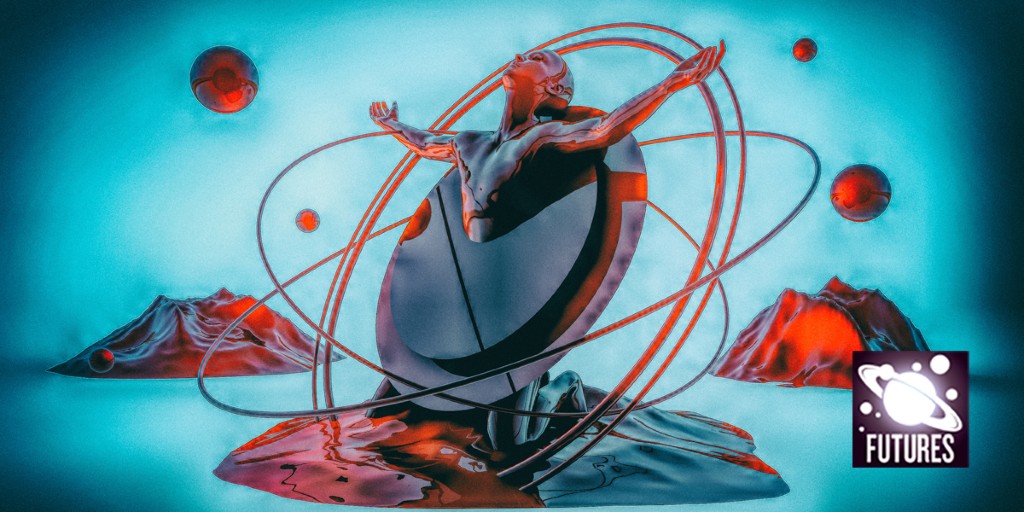A cool breeze blows the curtains in, billowing the off-white cotton that’s spattered now with colours that come from a human body: red and brown and a sort of greenish yellow. Colours that preserve the sound of vomiting and drowning in blood — the curtains moving in and out like a respirator, only there’s no salvation in the breeze.
We’ve been through this before. Not again. Not so soon after the last one.
Bodies litter the floor, the chairs and beds and gurneys. Some draped gracefully, as if posed in a Victorian death photo, others crumpled, like police outlines but solid and without the chalk, and stinking of the disease you’ve waited for but has refused to take you.
First it was an enemy, one everyone was determined to fight just as you had the last one — the one that stopped the world. You donned masks and gowns, faceplates and gloves. You didn’t touch anything, didn’t breathe too deeply, washed your hands until they bled.
But then things changed. Nothing the doctors did worked. The disease moved so fast, its attack so final. The place became more and more quiet as hearts all around you stopped. Till there were just a few of you left. Then you heard a gunshot. And another.
You ran, but only got to the gates. Gates you once found comforting. Gates someone had now padlocked shut.
Not again. Not so soon after the last one.
Guards in iso suits watched as you decided not to shake the chain-link. The people you’d thought were in the building with you lay dead, still clutching the fence, holes in their heads.
If you’d tried to climb, you’d have been shot, too.
Read more science fiction from Nature Futures
Some of the guards seemed to move forward, as if hoping you’d be stupid enough to try.
Die, you imagined them saying. Die and stay dead, and when you’re gone, we can finally burn this piece of hell to the ground and no one will ever know how close we came because we’ve been through this before. And we can’t again. Not so soon after the last one. Not when nothing we’ve done here has worked.
You backed off. The guards finally relaxing.
Now they watch you with an interest you can’t fathom. They leave water and food, and the food’s got better the longer you’re alive.
You’ve been in here so long with the sick and the dead. It’s clear you’re immune. Shouldn’t that be interesting? Shouldn’t your blood be worth something? Couldn’t they use it to make a vaccine or something? Last time they made so many so fast. But that disease was easier, even if it stopped the world.
This disease took down everyone in the hospital: patients, doctors and nurses, custodial staff, and those rounded up by contact-tracing who were told they were being quarantined.
That word doesn’t mean what it used to.
You’re not a doctor or a nurse. You’re admin and were in charge of getting supplies and making sure the authorities knew what was going on.
They knew, but the country — the world — probably never found out because it was such a small outbreak, and the disease killed so fast it ran out of hosts before it could spread.
And the authorities shut down all the comms.
We’ve been through this before. Not again. Not so soon after the last one.
You hear something, a crackle, familiar and terrifying, and you run outside.
Two figures stand at the fence, one holding a flamethrower, the fire low but still on. The other holds a rifle. “You’re cleared,” one of them says, but they don’t unlock the gates.
“I can go?”
“We’ve waited to make sure you’re not going to get sick.”
But that’s not the same as saying you can go. And they’re not unlocking the gates. If you’re cleared, shouldn’t they let you leave?
You think you should run back, into the building — the house of the dead they won’t follow you into — but before you can turn, you see the rifle come up, hear it fire.
There’s a sharp pain in your neck and you reach for it, expecting your hand to come away bloody but you feel feathers. A tranq dart? Like you’re some kind of animal?
You wake later, clean but cold. In a room that looks like what you used to see of the BSL labs, only this one is transparent on all sides. People in iso suits watch you.
You want to pound on the clear surface, you want to scream, but you don’t. You keep your voice calm. “You said I was cleared.”
“You’re the only survivor. You’re crucial. We’ll take very good care of you.”
You don’t know which of them has said it. You think that’s by design.
“Let me go. Please. I’ll help. You don’t have to force me. I’ll help.” They can let you go because you’re probably not a carrier — you’re really probably not.
You can hear their answer even if they don’t say a word: We’re sorry. But we can’t risk it.
Not again.
Not so soon.
Not if we can stop it this time.






More News
Author Correction: Bitter taste receptor activation by cholesterol and an intracellular tastant – Nature
Audio long read: How does ChatGPT ‘think’? Psychology and neuroscience crack open AI large language models
Ozempic keeps wowing: trial data show benefits for kidney disease